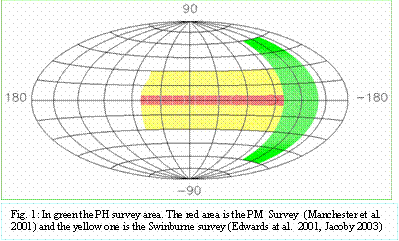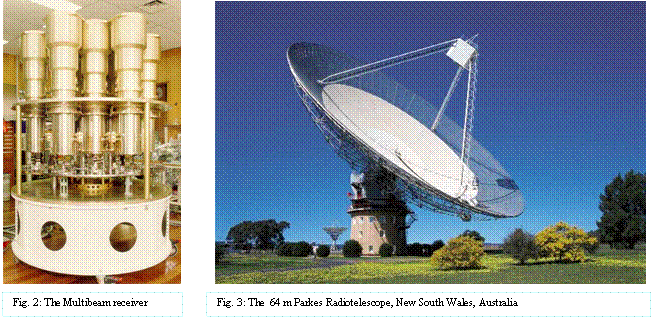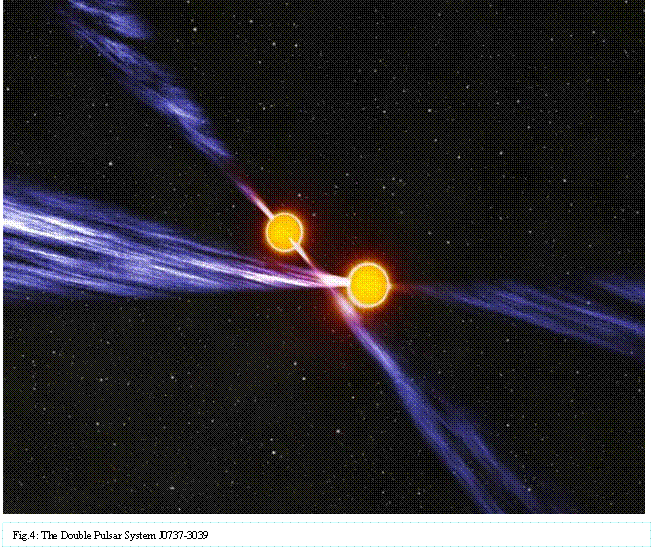The Parkes High-Latitude Pulsar Survey
|
|
The Parkes High-Latitude (PH) Pulsar Survey covers the region enclosed by Galactic longitude 220° < l < 260° and Galactic latitude |b| < 60° (see Fig. 1) for a total of 6456 pointings of 265 s duration each. The observations, started in November 2000 and completed in December 2003, were made using the multibeam receiver (Fig. 2) on the Parkes 64-m radio telescope (NSW, Australia, Fig. 3) operating at a central frequency of 1347 MHz and consisting of 13 separate beams. The total 288 MHz bandwidth was subdivided into 96 X 3 MHz channels in order to minimise the pulse broadening due to dispersion in the interstellar medium. The signal was one-bit sampled every 125 μs and recorded on Digital Linear Tapes for off-line analysis.  The data processing is essentially made in three steps: first the raw undispesed data are searched in the frequency domain for Radio Frequency Interferences (RFIs): every signal that appears more than a given number of times in each tape/pointing/beam is flagged as RFI and deleted. The data are then dedispersed with a high number of trial values of the dispersion measure (DM) and finally each dedispersed time series is Fourier transformed using a Fats Fourier Transform and the power spectrum is searched for high signal-to-noise peaks. For every beam up to 256 x (5 DM folds) suspects are stored and analysed in the time domain: using the programme pdm the best (giving the highest pdm signal-to-noise ratio) values of the period and of the dispersion measure are searched around the nominal values. All the suspects having pdm S/N greater than 8 (usually) class=GramE>are visually inspected using the newly developped tool Reaper (Faulkner et al. 2004).  When a candidate pulsar is selected, confirmation observations are scheduled at Parkes; once the pulsar is confirmed an observational campaign (timing) starts in order to measure with high accuracy the rotational, positional and, in case of a binary system, orbital parameters of the newly discovered pulsar. The processing and inspection of the data of the Parkes High-Latitude Pulsar Survey is now finished (although a re-examination of the oldest results using Reaper is under way) and yielded the discovery of 18 new pulsars, four of which belonging to the class of the rapidly spinning millisecond pulsars. Three of the latter belong to a binary system and one of them, PSR J0737-3039A, orbits around another pulsar, PSR J0737-3039B: this is the first ever Double Pulsar System discovered.  [Fun facts: the double pulsar appeared in an episode of Star Trek Voyager!] Timing solutions have been obtained for 17 of the 18 new PH pulsars. The parameters of the double pulsar system are published in Burgay et al. 2003 and Lyne et al. 2004 (click here for a comprehensive list of the publication on J0737-3039 system). The other results of the PH survey are reported in Burgay et al. 2006 Bibliography
Last update: 08-Feb-2007 |